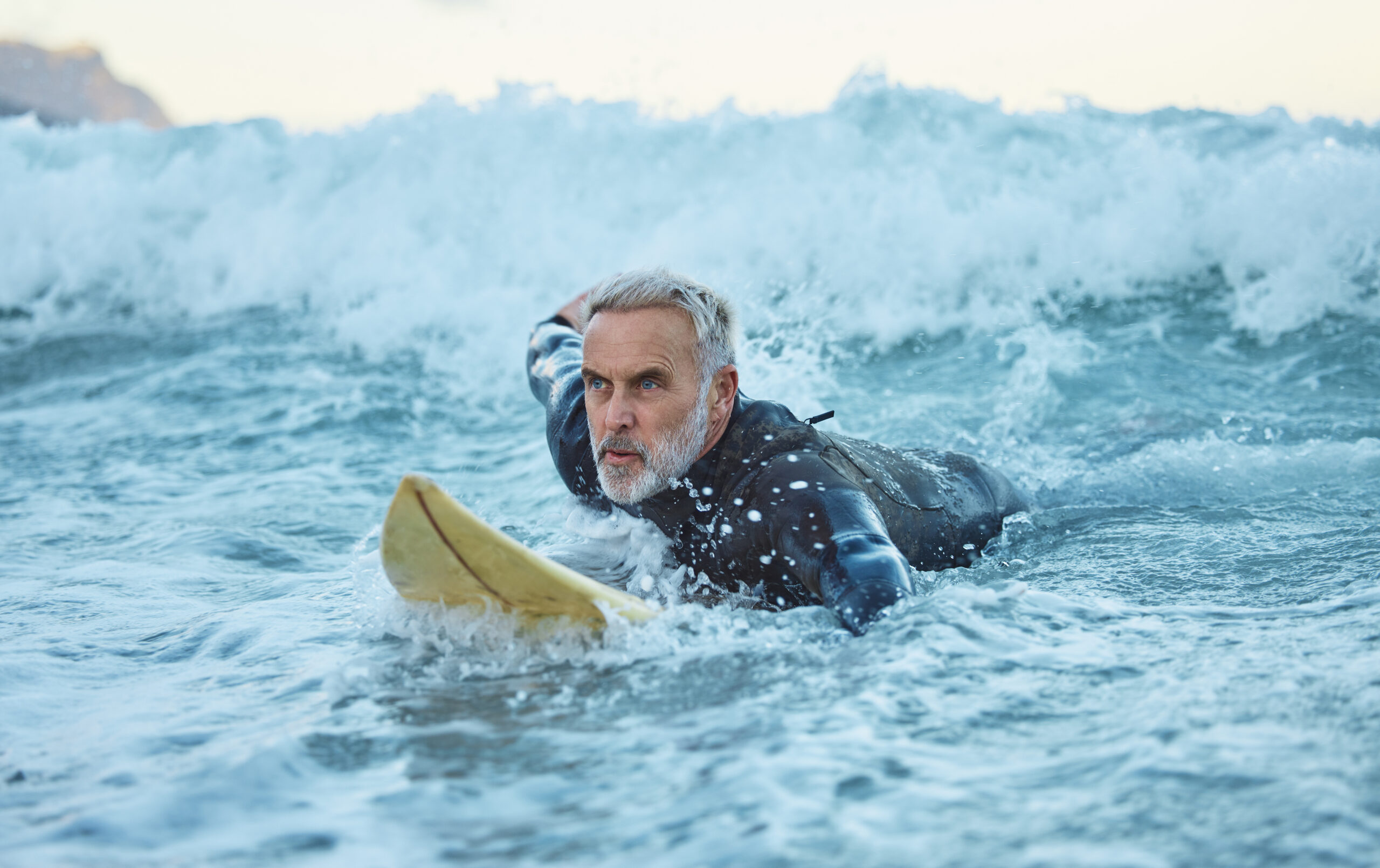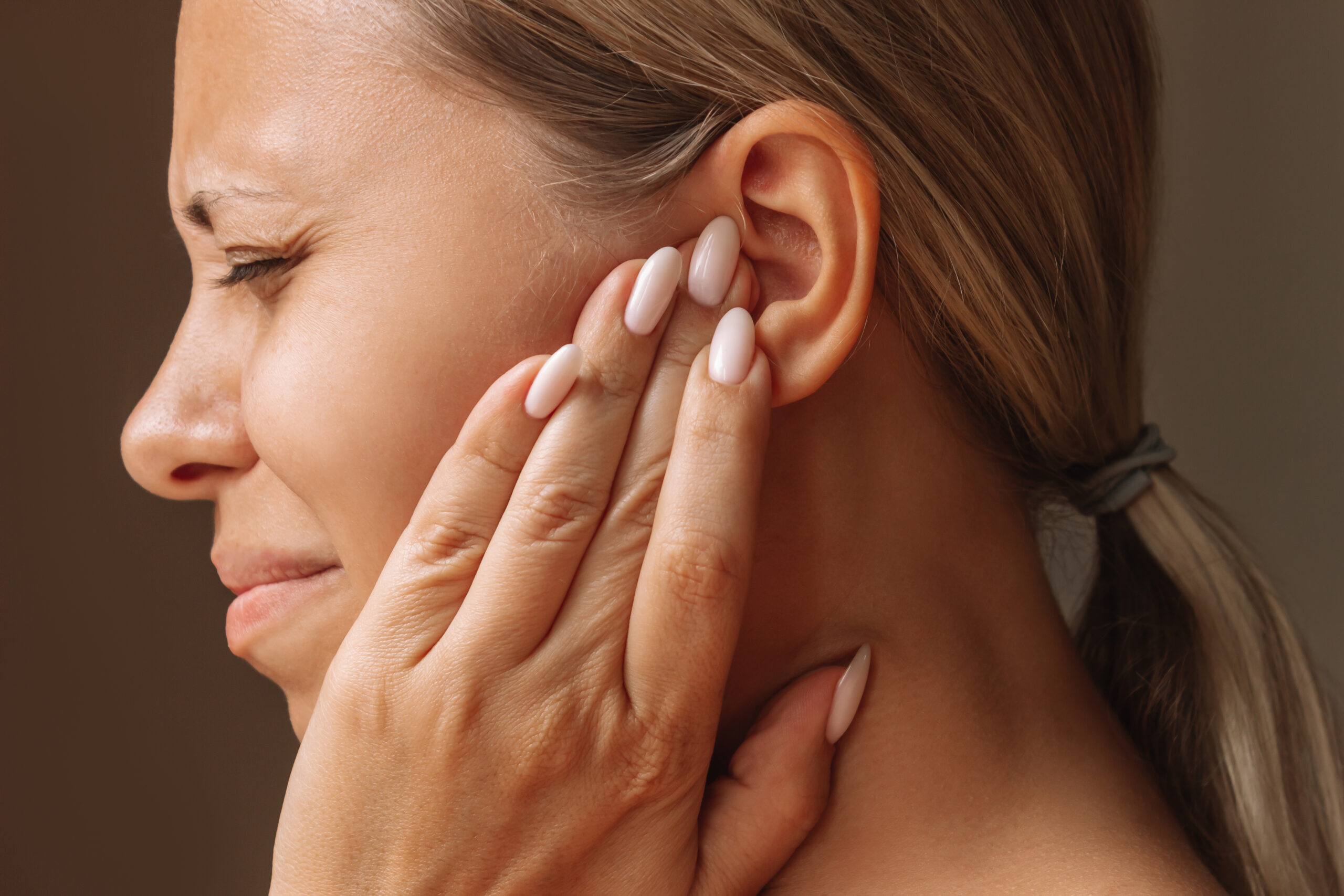What is Surfers Ear
Exostoses/Surfer’s Ear
The technical term for Surfer’s Ear is External Auditory Canal Exostoses (EACE).
An exostosis (a benign outgrowth of bone) can occur in various places around the body. However, EACE occurs when the bone covering layer in your ear canal is overstimulated.
With External Auditory Canal Exostoses, the bone begins to grow in lumpy formations which can create, deep to them, a space in the deeper ear canal, which can then allow water and debris to become trapped.
If left untreated, over time, the bony lumps may block the ear canal completely, causing a hearing loss in the affected ear.


What causes Surfer’s Ear?
Surfer’s Ear is a progressive condition that is most often attributed to chronic cold seawater exposure. Such repeated exposure stimulates new bone growth involving the inner 2 thirds of the canal.
Vasodilation (widening of blood vessels) occurs after cold water vasoconstriction when the body attempts to enhance blood flow to areas where, from the cold, it appears to be lacking. This results in irritation, this in turn being a stimulus which sets off osteoblasts which make bone; in other words stimulating new bone growth.
External Auditory Canal Exostoses seem to occur more often in people in their 30s and 40s ( but are also seen later), and if left untreated, time and continuing repeated exposure will increase the severity of the condition.
If you are experiencing symptoms of EACE, it’s important to be aware that it is something that gets worse, meaning that definitive treatment may well be advised.
What causes Surfer’s Ear?
Surfer’s Ear is a progressive condition that is most often attributed to chronic cold seawater exposure. Such repeated exposure stimulates new bone growth involving the inner 2 thirds of the canal.
Vasodilation (widening of blood vessels) occurs after cold water vasoconstriction when the body attempts to enhance blood flow to areas where, from the cold, it appears to be lacking. This results in irritation, this in turn being a stimulus which sets off osteoblasts which make bone; in other words stimulating new bone growth.
External Auditory Canal Exostoses seem to occur more often in people in their 30s and 40s ( but are also seen later), and if left untreated, time and continuing repeated exposure will increase the severity of the condition.
If you are experiencing symptoms of EACE, it’s important to be aware that it is something that gets worse, meaning that definitive treatment may well be advised.

Symptoms of Surfer’s Ear
While Surfer’s Ear may not be painful in itself, those with the condition may first notice that their ear appears ‘full’, there may be recurring ear infections, or there could even be signs of a hearing loss.
Water may also be getting trapped inside the ear causing an irritating and blocked sensation.
A history of such complaints should be noted, and a physical exam that includes an otoscopy is recommended to identify whether Exostoses have formed inside the canal.

Risks of Surfer’s Ear
Visitors to my Auckland Ear Surgery Clinic often find that their first indication of Surfer’s Ear is recurring “otitis externa” – this is sometimes referred to as Swimmer’s Ear.
These ear infections can be painful and itchy and may be accompanied by a discharge from the ear. Such infections at the time may also result in what is usually only a temporary hearing loss.
There is also a risk of impacted ear wax with Surfer’s Ear, as the ear canal becomes increasingly narrow due to the bone growth inherent to External Auditory Canal Exostoses (EACE).
The ear canal’s self-cleaning process is also disrupted, and such wax build-up may also result in hearing loss.
Surfer’s Ear when symptomatic commonly require treatment as time and repeated exposure to the conditions that stimulate the bone growth in the first place will continue to exacerbate the problem.
Is Surfer’s Ear Preventable?
Surfers, kite surfers, windsurfers, divers and ocean swimmers may be able to offset their chances of suffering from EACE by taking preventative measures.
The key to avoiding External Auditory Canal Exostoses (EACE) is preventing cold water from entering the ear canal.
Wetsuit hoods, dive helmets, ear plugs, or swimming caps can be helpful, and ear plugs that are specifically designed for extreme marine conditions have been shown to have good effect.
Most audiology practices offer custom earplug services, where you can have a set of such plugs made specifically for your ears.
Protective plugs are only recommended in some after External Auditory Canal Exostosis (EACE) surgery to prevent the reformation of blockages.
How To Treat Surfer’s Ear
Exostoses are often an evolving condition. In the early stages they may present with water being trapped in the ear, in which case high concentration alcohol ear drops may be useful to evaporate the water.
Recurring ear infections are often managed through the use of prescriptive topical antibiotics and thorough cleaning.
In severe cases surgery is recommended. To understand treatment procedures carried out by Dr Sillars in more depth, please visit our Treatment page.